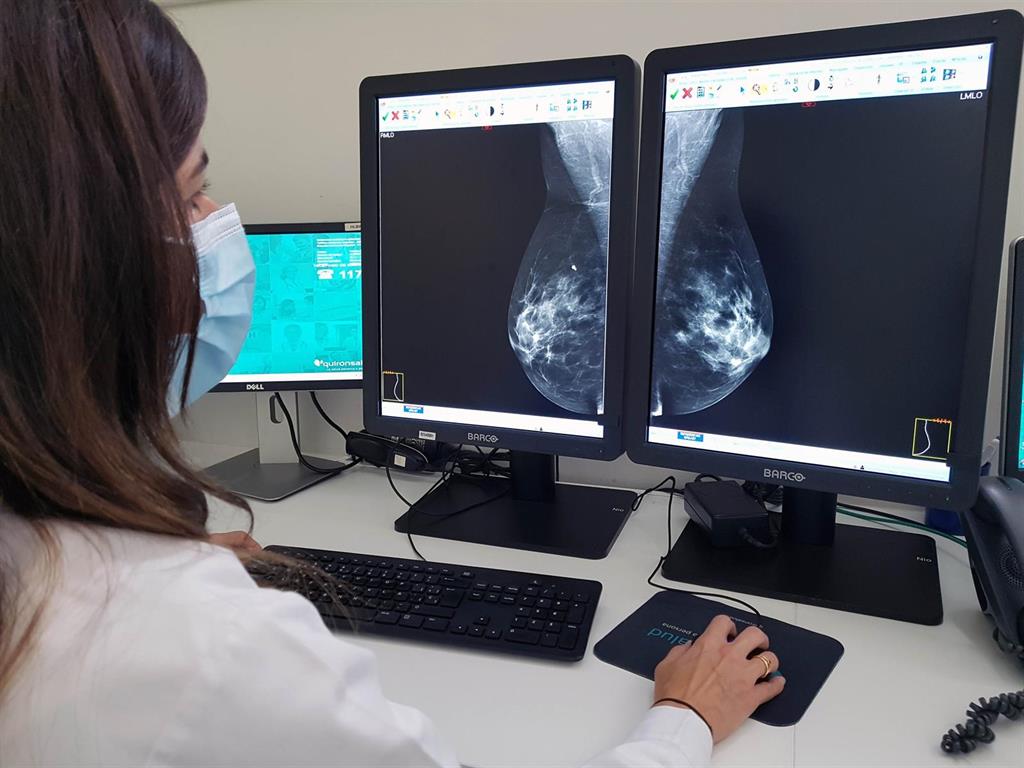MADRID, 11 Feb. (EUROPA PRESS) –
Studies with data in real life confirm the benefits of new therapies in ovarian and breast cancer, as indicated by experts during the fourth day of the ‘XXIII Symposium of Reviews in Cancer. Medical treatment of cancer in the year 2021 ‘, which is held until this Friday, in virtual format.
In recent years, new therapeutic targets have been incorporated that improve survival and can reverse de novo or acquired hormonal resistance in patients with metastatic breast cancer. The greatest advance in its treatment has come with the development of inhibitors of cyclin-dependent kinases (iCDK). In particular, it reduces resistance to hormone therapy.
The international multicenter retrospective IRIS (IBRANCE Real World Insights) study reviews the medical records of CMM HR + / Her-2 – patients treated with palbociclib. The objective of the study is to describe the demographic and clinical characteristics, the treatment patterns and to evaluate the clinical benefit. The United States, Argentina and Germany participated. Data were obtained from 652 patients: 360 (55.2 percent) were treated with palbociclib and IA and 292 (44.8 percent) with palbociclib and fulvestrant.
Six years after the approval of palbociclib in February 2015, Dr. Ignacio Peláez Fernández, from the Hospital Universitario de Cabueñes de Gijón summarizes the real-world evidence of this drug in metastatic breast cancer. As indicated, it is “a valid and robust therapeutic option in the treatment of first or successive metastatic breast cancer with positive and HER2 negative hormone receptors”.
For his part, Dr. Luis Manuel Manso Sánchez, from the Hospital Universitario 12 de Octubre in Madrid, explains hormonal therapy, is the main treatment option for patients with HR + HER2- breast cancer. Despite its activity, hormone therapy is associated with initial, or more frequently acquired, resistance after exposure to one or more lines of treatment.
Loss of cell cycle regulation due to alterations in the cyclin pathway is common in HR + HER2- advanced breast cancer and this leads to the development of treatments targeting this pathway through the inhibition of CDK 4/6 .
“Palbociclib is the first drug in this class and represents the greatest therapeutic advance in recent years for the treatment of HR + HER2- advanced breast cancer. The combination of palbociclib with hormonal therapy significantly increases progression-free survival compared to hormonal therapy in the first and second line of treatment of HR + HER2 – advanced breast cancer, “he adds.
For her part, Dr. Cristina Hernando Melià, from the Hospital Clínico Universitario de Valencia, highlights the importance of increased survival in luminal patients, as well as the role of cyclin inhibitors. “Breast cancer is responsible for the highest cancer-related mortality among women, as it is the most commonly diagnosed. Although the prevalence is high, mortality has been declining thanks to therapeutic advances,” he said.
It is a biologically diverse pathology with several subgroups defined according to their genomic or molecular characteristics. At the clinical level, three groups with different therapeutic needs are usually defined. 60-65% of the cases are RH + and Her2- tumors; 20-25 percent are Her2 + tumors, and 15-18 percent are triple negative tumors.
About 5 percent of patients present with de novo metastatic disease. Of those diagnosed in the early stages, 20-25 percent will have distant recurrence despite initial treatment. Median overall survival for metastatic breast cancer with RH + and Her2- tumors is 38 months. According to the main clinical practice guidelines, endocrine therapy is the mainstay of therapy.
In these women, the use of sequential hormonal treatments is recommended, except in cases where the extension of the disease is life-threatening, or when there is significant or very symptomatic visceral involvement. “Patients with metastatic breast cancer have limited therapeutic options and a poor prognosis. For this reason, it is necessary that new treatments that prolong the time to progression are rapidly incorporated into the available therapeutic arsenal”, comments Hernando Melià.
OVARY CANCER, “A CHRONIC DISEASE”
Regarding ovarian cancer, Dr. María Jesús Rubio Pérez, from the Reina Sofía University Hospital in Córdoba, has indicated that the objective of the new targets “is to maintain the response achieved with chemotherapy and increase these treatment-free intervals”.
For women with recurrent disease there are many treatment options. Experts consider it “challenging” to define the optimal sequence of treatment. “We know that when patients relapse after six months, treatment with platinum is the best option. When platinum is not the best option, it is acceptable to use a combination without platinum (trabectedin + pegylated liposomal doxorubicin [PLD]) “, he explained, recalling that in recent years, we are witnessing a change in the paradigm of ovarian cancer treatment.
Next, Dr. Avinash Ramchandani, from the Complejo Hospitalario Universitario Insular de Canarias (Las Palmas), pointed out that in order to carry out good practice in the current management of ovarian cancer, it is necessary to make the diagnosis of the BRCA mutational status analysis in all non-mucinous histology ovarian tumors. “It is a predictor of response to PARP inhibitors, but, in addition, it offers us relevant information at the family level that allows us to carry out genetic counseling to our patients,” he says.
–

![[Eland Cables, Shengzhou Metal Products, Cable Universal, Etc.] Competitive Analysis of the Global Overhead Cable Bundle (ABC) Market 2021-2030 [Eland Cables, Shengzhou Metal Products, Cable Universal, Etc.] Competitive Analysis of the Global Overhead Cable Bundle (ABC) Market 2021-2030](http://mundociruja.com/wp-content/uploads/2021/02/chemical-Spanish.jpg)